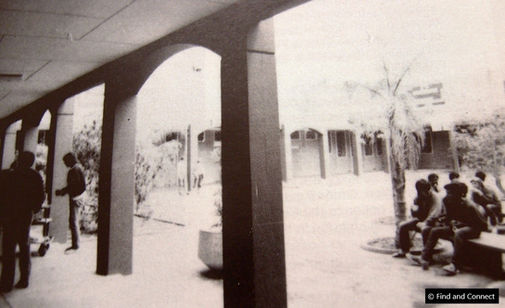Longmore Detention Centre
Longmore Detention Centre, also known as Longmore Remand and Assessment Centre, played a key part in Western Australia’s juvenile justice system for over 30 years. It first opened in 1965 in Bentley, in Perth’s southern suburbs and was named after James Longmore.
James Longmore played a key role in shaping Western Australia's child welfare system in the early 1900s. He began as Superintendent of Public Charities and Inspector of Charitable Institutions in 1898 and later became Secretary of the State Children Department. He had a major influence on how child protection and care were managed in the state, especially through his involvement in developing the State Children Act of 1907, which helped lay the foundation for the child welfare system in the decades that followed.
The centre was run by the Child Welfare Department and later, the Department of Community Welfare. It was set up to house young people between the ages of 13 and 18 who were waiting to appear in court or be placed in a long-term care arrangement. The number of young people sent there grew rapidly, with reports showing admissions rising into the thousands by the 1980s, often stretching the centre beyond its intended capacity.
As time passed, Longmore began to serve a wider function. In October 1982, a small hostel opened on the grounds of the detention centre to provide accommodation for six boys. The Longmore hostel was renamed Collier House in March 1985.
Restructure
In September 1983, the Longmore Remand and Assessment Centre was restructured, with part of the facility renamed the Longmore Training Centre. The change followed recommendations from the 1982 Edwards Inquiry, which emphasised the importance of separating young people held on remand or undergoing assessment from those serving custodial sentences. The inquiry called for a dedicated training centre where sentenced youths could receive practical skills and support to help them reintegrate into the community.
Longmore Training Centre
In 1993, Longmore’s management was transferred to the Ministry of Justice. This resulted in a new name (Longmore Detention Centre) and a consolidation of its remand, assessment, and training services. This shift meant that educational and vocational training programs aimed at rehabilitation were offered not only to sentenced young people but also to those on remand. The Training Centre focused primarily on boys, mostly aged between 12 and 16 and included schooling, workshops and programs addressing drug use and behavioural issues.
Despite these efforts, the centre remained overcrowded for much of its operation, and conditions were often under pressure. Although it was a high-security facility built to accommodate up to 73 young people, it frequently exceeded that capacity.
Inside Longmore
Life inside Longmore was a mixture of strict routines and rehabilitation but it was also marked by difficulties. A 1989 study highlighted concerns about suicide attempts among young detainees, reflecting the mental health struggles many faced. Former residents like Judith Brooker, later shared experiences of emotional hardship while detained at Longmore, showing the human impact of institutional care during this period. Records also show that many detainees were there for short periods, sometimes less than 48 hours, especially those on remand awaiting court outcomes.
End of an Era
In March 1994, the Rangeview Remand Centre opened in Murdoch as a purpose-built facility for young people on remand. It was designed to replace the ageing and overcrowded Longmore Remand and Assessment Centre in Bentley, which had struggled for years to manage both short-term and long-term detainees. Rangeview initially had capacity for 48 beds, later expanding to accommodate between 72 and 80 young people.
With the opening of Rangeview, Longmore stopped housing juveniles on remand or undergoing assessment. Those responsibilities were transferred entirely to the new facility. This shift allowed Longmore to focus solely on its role as a training centre for sentenced youths, concentrating on rehabilitation and skill development without the pressures of managing a high turnover population.
Longmore continued operating in this reduced capacity until its official closure in 1997. Its closure was part of a broader overhaul of the state’s juvenile justice system. Young offenders were moved to the newly opened Banksia Hill Juvenile Detention Centre in Canning Vale, which began operating in September 1997 as a more modern, centralised facility.
Since 2012, Banksia Hill has become Western Australia’s only juvenile detention centre, following the closure of Rangeview and the consolidation of all youth detainees into one location.
After Longmore closed, the site took on a new purpose. In 2004, it was redeveloped into the Boronia Pre-Release Centre for Women, a minimum-security facility focused on supporting female prisoners as they prepare to return to the community.

.png)









